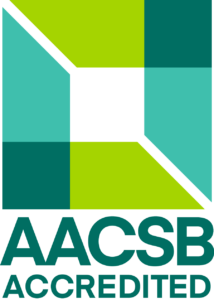Mathematics for Economists
- Credits: 6
- Ending: Examination
- Range: 2P + 2C
- Semester: winter
- Year: 1
- Faculty of Economics and Finance
Teachers
Included in study programs
Teaching results
Knowledge: basic knowledge of linear algebra (vectors, matrices, systems of linear equations) and basic knowledge of differential and integral calculus.
Skills: be able to solve basic problems of linear algebra, solve basic problems of differential and integral calculus with the use of appropriate open-source software systems, apply this issue in economic analysis.
Competences: independently acquire new knowledge and actively expand their mathematical knowledge, awareness of the need to use quantitative (mathematical) methods in economic applications.
Indicative content
Introduction to the linear algebra. Matrices. Systems of linear equations. Function of one variable. Functions of economic analysis. Limit and continuity of function. Asymptotes. Differential calculus of functions of the one variable. Marginal values. Elasticity of function. Graphing functions by characteristic points. Local extremes of functions and economic applications. Function of several variables. Differential calculus of functions of several variables. Functions of economic analysis. Homogeneous function. Partial derivatives. Economic applications of partial derivatives - marginal values, total differential and partial elasticity. Local and bound extremes and economic applications. Integral calculus - indefinite and definite integral in economic applications.
Support literature
1. KADEROVÁ, A. - KRÁTKA, Z. - KRČOVÁ, I. - MUCHA, V. - ŠOLTÉSOVÁ, T. (2020). Matematika pre ekonómov. Bratislava: Letra Edu.
2. KADEROVÁ, A. - MUCHA, V. - ONDREJKOVÁ KRČOVÁ, I. - ŠOLTÉSOVÁ, T. (2016). Matematika pre 1. ročník: učebný text. Bratislava: Vydavateľstvo EKONÓM, online.
3. SIMONKA, Zs. - STREŠŇÁKOVÁ, A. (2020). Lineárna algebra: (elementárnymi úpravami). Bratislava: Letra Edu.
4. FECENKO, J. - PINDA, Ľ. (2006). Matematika 1. IURA EDITION. Bratislava.
5. FECENKO, J. - SAKÁLOVÁ, K. (2006). Matematika 2. IURA EDITION. Bratislava.
Syllabus
1. Linear algebra. Arithmetic vectors (linear combination, dependence and independence). Economic interpretation of vector algebra. Matrix (transposed, unit, upper (lower) triangular, stepped, reduced stepped). Matrix operations (sum, difference, multiplication). Equivalent row adjustments to the matrix. 2. Matrix rank (equivalent adjustments). Matrix determinant. Inverse matrix (equivalent adjustments). Matrix equations. Economic interpretation of matrix algebra. 3. System of linear equations. Frobeni's theorem. Gaussian elimination method (homogeneous and inhomogeneous system). Use of software in solving problems from linear algebra. 4. Definition of a function of one real variable. (graphs of elementary functions, functional rule transformations, inverse function, domains), function of total cost (revenue, profit) and average costs (revenue, profit). Demand function. 5. Definition of function limits. Limit of a function in one's own and in one's own point. Unilateral limits. Continuity of function. Asymptotes of a function graph. 6. Differential ratio and derivation of a function of one real variable. Derivatives of elementary functions. Derivation of sum, difference, product, proportion and derivation of a compound function. Higher order derivatives. L'Hospital's rule. 7. Economic interpretation of derivation and differential. Marginal quantity, elasticity and economic interpretation. 8. Monotonicity of the function. Local extremes of function. Optimization tasks: Maximizing profit and minimizing average cost. 9. Convexity and concavity of a function. Inflection point. The concept of a function of two or more variables. Economic analysis functions (function of total cost, revenue, profit, demand function). Homogeneous function and economic interpretation (production function). 10. Partial derivatives. Higher partial derivatives. Marginal quantity, total differential and economic interpretation. 11. Partial elasticity of demand and economic interpretation. Definition of local extreme. Necessary and sufficient condition for the existence of a local extreme. Economic applications. 12. Bound extremes and economic applications. 13. Introduction to integral calculus.
Requirements to complete the course
The semester work - the written test - 30%,
The final written test (theory and examples) - 70%
Student workload
Participation in lectures - 26
Participation in exercises - 26
Preparing for exercise - 26
Preparation for written test - 26
Exam Preparation (theory) - 26
Exam Preparation (examples) - 26
Total load – 156
Language whose command is required to complete the course
slovak
Date of approval: 11.03.2024
Date of the latest change: 15.05.2022

